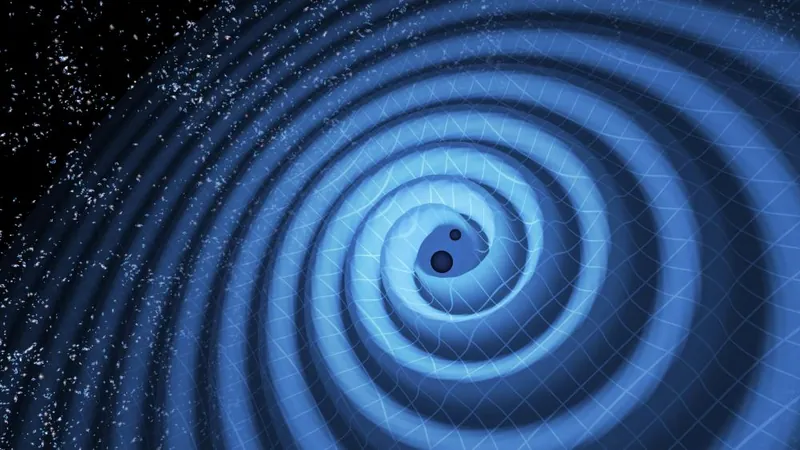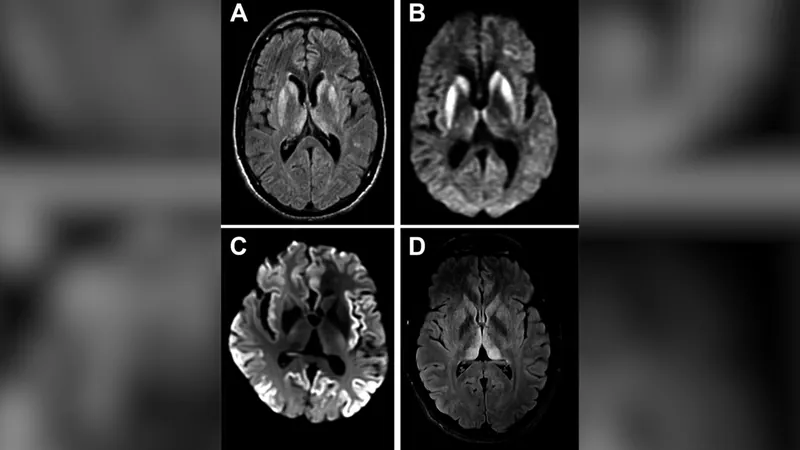
Unlocking the Mysteries of the Universe: Could Gravitational Waves Revolutionize Communication?
2025-01-29
Author: Jia
Unlocking the Mysteries of the Universe: Could Gravitational Waves Revolutionize Communication?
In 2015, astronomers made history by detecting gravitational waves (GWs) for the first time, unveiling a new realm of exploration within the cosmos. Traditionally, humanity has relied on light of all wavelengths to understand the Universe, but this breakthrough hinted that a fresh perspective could be on the horizon. Now, the pressing question arises: Can we harness gravitational waves for communication?
While this concept may seem speculative, initiatives are underway to evaluate its feasibility for future applications. Recent research, titled *Gravitational Communication: Fundamentals, State-of-the-Art and Future Vision,* sheds light on this intriguing possibility. Authored by Houtianfu Wang and Ozgur B. Akan from the Internet of Everything Group at the University of Cambridge, UK, the study outlines the potential of gravitational waves as a robust communication method, especially in extreme environments.
Why Gravitational Waves? The Limitations of Electromagnetic Communication
Current communication technologies, predominantly based on electromagnetic waves, encounter several significant challenges. Signals diminish over distance, atmospheric conditions can interfere, and obstacles like solar flares create additional barriers. Gravitational wave communication could sidestep many of these issues, maintaining signal integrity over vast distances with minimal energy loss.
One of the fascinating aspects of GWC is the prospect of utilizing naturally occurring gravitational waves, which could significantly reduce energy requirements for communication. The authors assert that *“gravitational communication offers a promising alternative, enabling reliable transmission even in the harshest environments.”*
The Road Ahead: Generating and Detecting Gravitational Waves
To make gravitational wave communication a reality, a critical step is developing artificial gravitational waves capable of detection. As it stands, GWs are incredibly weak, produced only by colossal astrophysical events, such as the merging of supermassive black holes—a phenomenon that generates only subtle effects that state-of-the-art instruments like LIGO can detect.
Wang and Akan highlight significant challenges in generating detectable GWs in laboratory settings. Although researchers have considered various innovative methods since the 1960s, the suitable materials and technologies remain elusive. Past attempts have included using rotating masses, piezoelectric crystals, and high-power lasers, yet none have yielded the strong, detectable gravitational waves needed for effective communication.
Addressing the Challenges: From Theory to Practical Application
While substantial theoretical groundwork exists, moving from theory to practice in GWC remains a formidable challenge. The authors emphasize the need for advanced detector technologies capable of identifying GWs across a broader frequency and amplitude spectrum. Current detection devices are primarily designed for astrophysical signals, necessitating a pivot in research focus to better align with communication needs.
Compounding these challenges are the unique noise sources implicated in gravitational wave observations, such as thermal noise and overlapping signals. Researchers must devise comprehensive channel models to mitigate these interference challenges, ensuring reliable signal detection.
The authors also explore the essential question of how to modulate gravitational waves—a critical element for any communication system. Various methods are being researched, including amplitude and frequency modulation techniques, yet many, such as those involving dark matter, remain in the realm of theoretical speculation due to the unknown nature of dark matter itself.
Gravitational Waves: A Suitable Solution for Space Communication?
Despite the significant roadblocks, the potential of GWC is irrefutable. As space exploration expands beyond our solar system, gravitational waves may offer a more dependable communication method than traditional electromagnetic channels, which struggle against the vastness and dynamic nature of the cosmic environment.
The research concludes that while practical gravitational wave communication remains a distant goal, the field is moving from abstract theory to tangible application. Wang and Akan are hopeful that their comprehensive survey will serve as a springboard for further innovation in this cutting-edge domain.
In their closing remarks, they state, *“Though a fully functional gravitational wave communication system is not yet feasible, our work highlights this promising avenue and encourages continued inquiry, particularly in relation to interstellar communication.”*
As we stand at the intersection of theoretical exploration and practical application, one thing is certain: the quest to communicate through gravitational waves could unlock unimaginable possibilities in our understanding of the Universe and beyond. Is humanity ready to embrace this revolutionary frontier? Only time will tell!


 Brasil (PT)
Brasil (PT)
 Canada (EN)
Canada (EN)
 Chile (ES)
Chile (ES)
 Česko (CS)
Česko (CS)
 대한민국 (KO)
대한민국 (KO)
 España (ES)
España (ES)
 France (FR)
France (FR)
 Hong Kong (EN)
Hong Kong (EN)
 Italia (IT)
Italia (IT)
 日本 (JA)
日本 (JA)
 Magyarország (HU)
Magyarország (HU)
 Norge (NO)
Norge (NO)
 Polska (PL)
Polska (PL)
 Schweiz (DE)
Schweiz (DE)
 Singapore (EN)
Singapore (EN)
 Sverige (SV)
Sverige (SV)
 Suomi (FI)
Suomi (FI)
 Türkiye (TR)
Türkiye (TR)